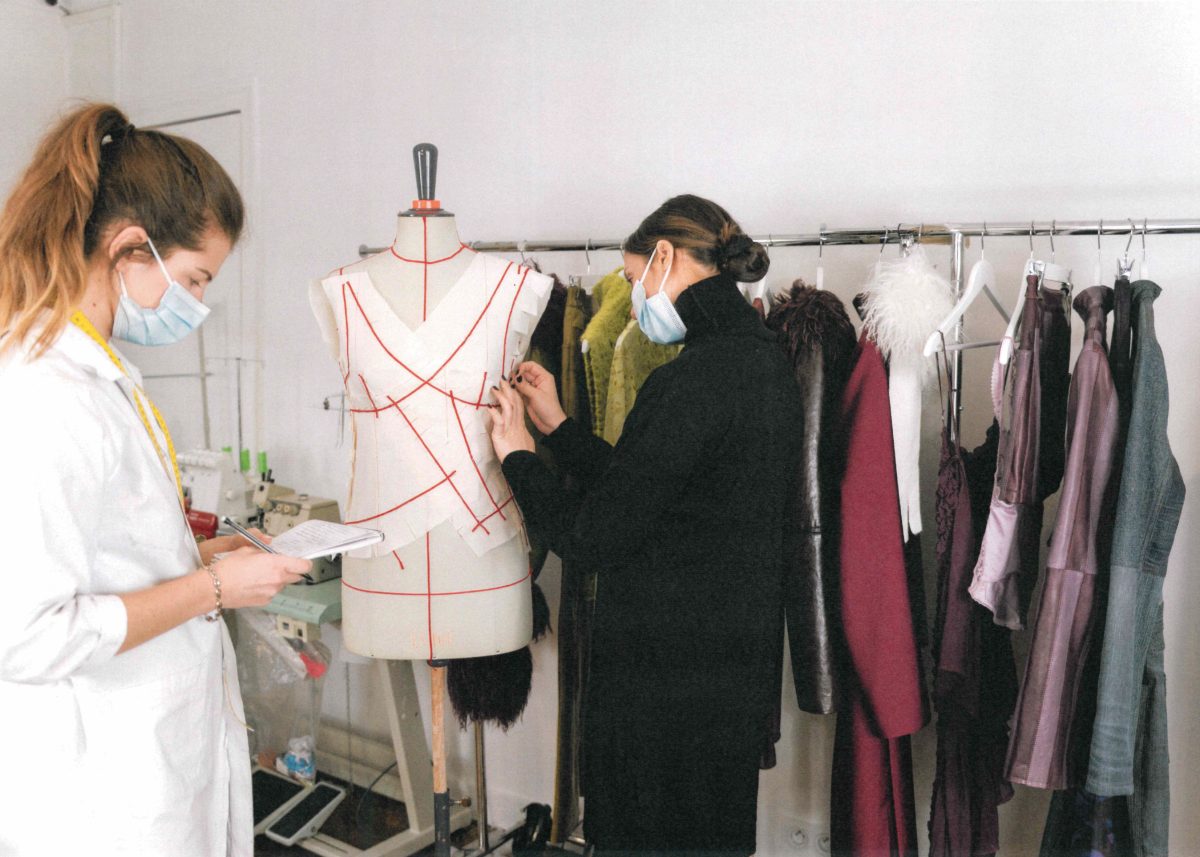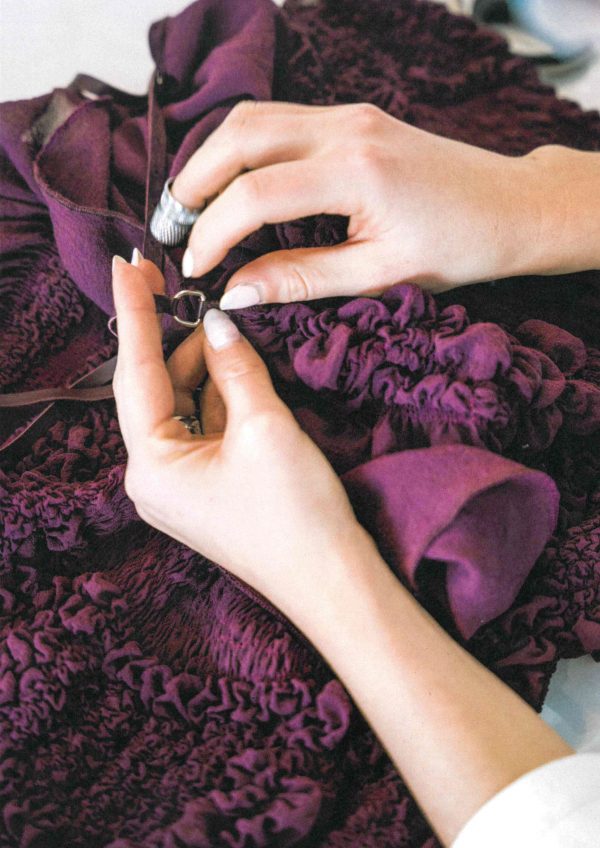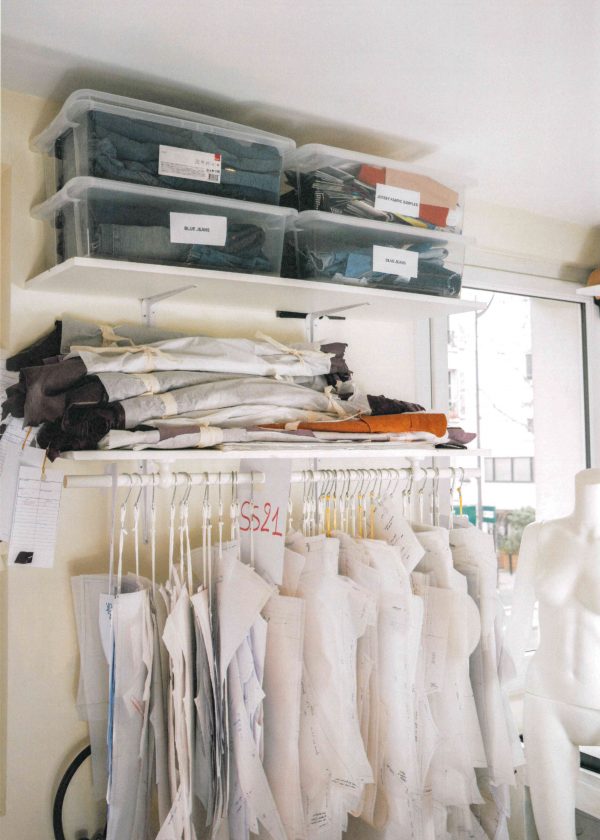“As a woman, I start designing each of my collections with this simple question: What would I like to wear?”
“As a woman, I start designing each of my collections with this simple question: What would I like to wear?”
FRÄULEIN: Where do you derive your main inspirations?
ALICE VAILLANT: My inspiration comes from my personal experiences. Dance is still very anchored in me and in my references. There is a real style repertoire among dancers. I am inspired by the motion and the fabric’s movement on the body. Dance has greatly influenced the way I perceive the body and its clothing.
In the backstage of the Opéra Garnier, I was as fascinated by the costumes as I was the movements of the dancers. The mix between stage costume and technical clothing is a guideline in my creative process. It was in the costume workshops of the Opera that I discovered artistic craftsmanship, admired French savoir-faire, marveled at the embroidery, lace and the know-how of the costume designers in dyeing fabrics. I am also inspired by the people, the street and the people around me.
What made you decide to start „Vaillant studio“?
I really loved my experiences working for important French houses such as Jean-Paul Gaultier and Nina Ricci. We live in a time where everything goes very fast and I think my generation is witnessing this speed and this permanent change. I could have chosen to continue working for a big house, but for what? I mean, we don’t know where we’ll be in 10 years, what world we’ll be living in, and what it’s going to be possible to do. It was on this basis that I chose to make my own mark and give my own vision a chance.
For you, sustainability plays a role in an industry that is subject to the greatest wear and tear. How do you think our fast-moving society and our immense consumption can be combined with sustainability?
Our generation and myself included are really conscientious. I believe the only way we can change the industry is by demanding nothing less than complete transparency on how our clothes are made. As a brand, I want to be an option for these consumers, even if it comes at a cost for a small brand. Above that, there’s an even more important issue, which is an ethical one. Sadly, we face a hard reality… there’s only a handful amount of manufactures left in France. I try to find solution as much as I can with my team. We source recycled fabrics, and we also buy different dead-stocks from denim to leather, and lace from the French city of Calais, which is where lace was invented.

Up-cycling is re-working further on something already existing, rather than the traditional designing process, of starting with untreated fabric. Is it harder to work with up-cycling than start at zero with a blank page?
No, in the contrary, I think up-cycled fabric has this vintage feel. It’s full of history. It really inspires me in my creative process.
What does “hybrid closet” mean?
As a women, I start designing each of my collection with this simple question: What would I like to wear? I want to be a go-to brand for women who live a fast paced lifestyle. If they are wearing Vaillant Studio, they can can leave their place in the morning, show up to work and feel powerful, but can also go straight to dinner or a date or a party with their friends and look fierce. That’s what I mean by a hybrid wardrobe.
You danced ballet. Is that reflected in any way in your designs?
Growing up in this, it’s obviously a big part of my inspiration. It’s in the costume ateliers of the Garnier Opera that I discovered the finesse of the french savoir-faire, observing closely the textures of the different fabrics, the embroideries behind each piece… I didn’t realize this at that time, but that’s where I fell into fashion.
In ballet, there’s this constant research of the perfection of movement. I realized later on that it’s quite similar to how I approach my work today. I always try to find the perfect fit for each piece that I design to enhance the women silhouette.
There is also a lot of competition. All these years of intense training really taught me about perseveration and strength, which are fundamental when you start your own brand, especially during these unpredictable times.


What do you think is the future of fashion? What should it be?
I think we’re heading towards a more sustainable and ethical production, which implies more local production, and developing new fabrics. For young designers, I believe its capital to rethink our industry for the future. We are living in such an interesting period, everything is being questioned and what we create needs to reflect our time.
Do you have a muse?
The muses are the women around me, the women in the street. I am not inspired by only one specific person. It changes from one collection to another.
Here is the FW21 collection
Interview by Carolin Desiree Becker
All picture courtesy of Vaillant Studio